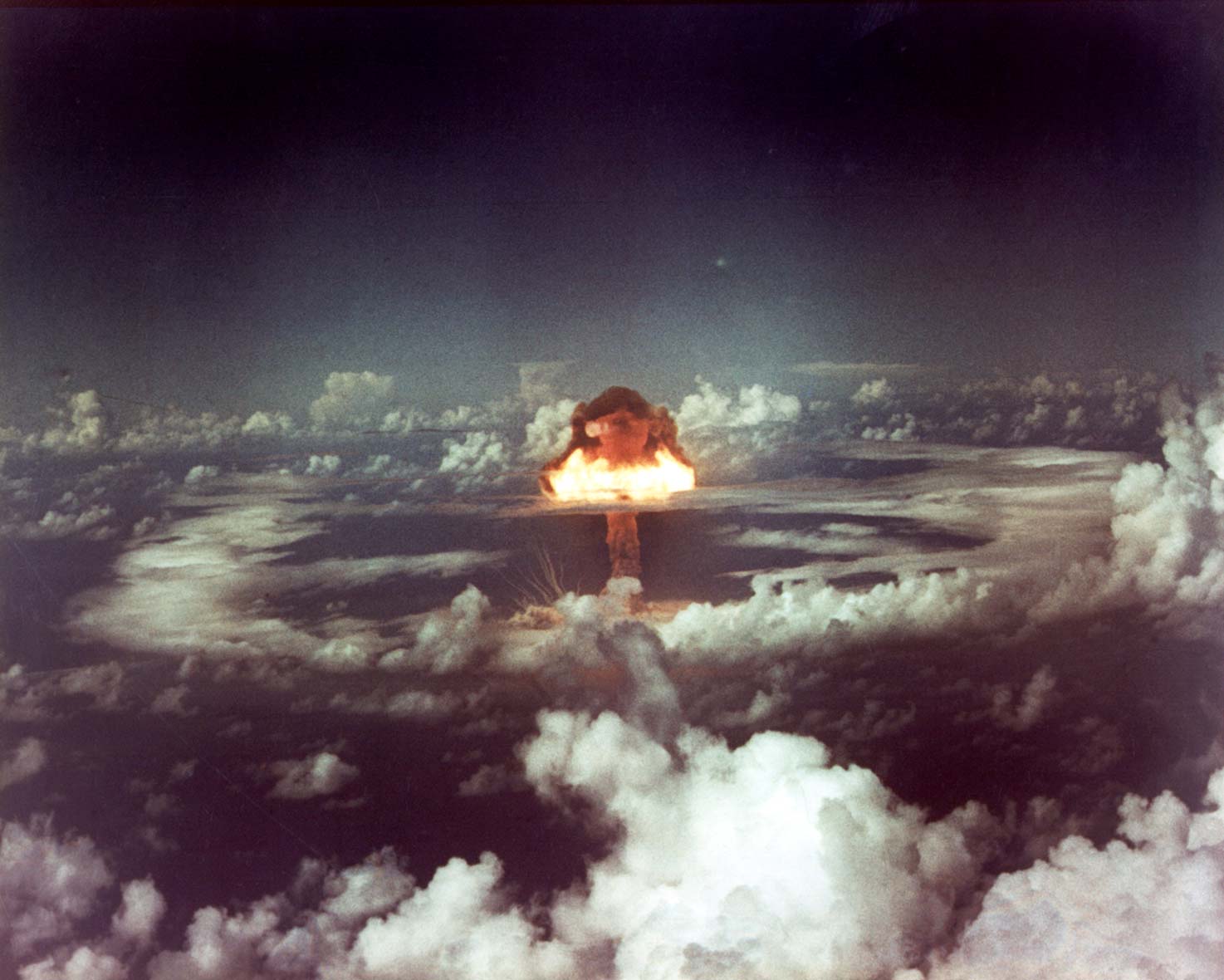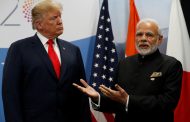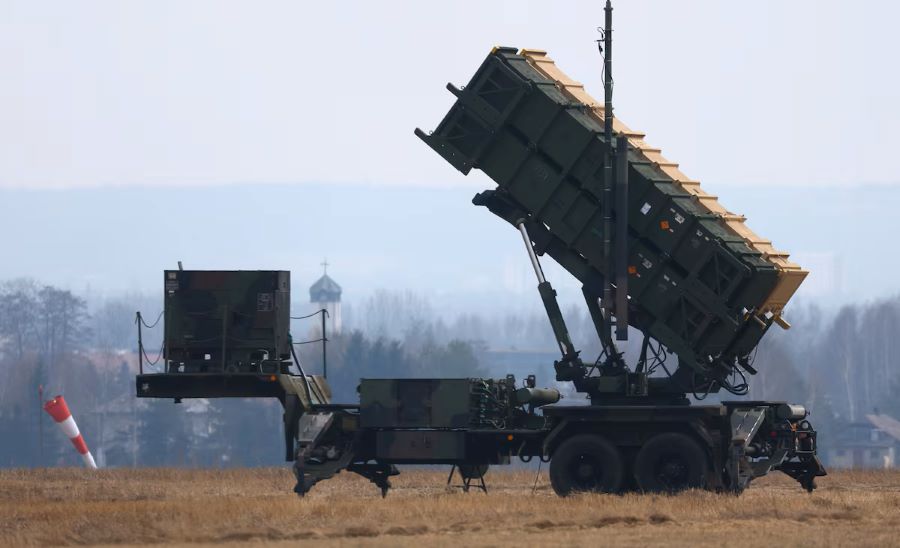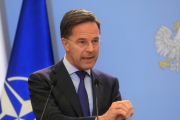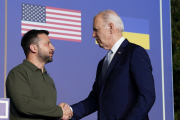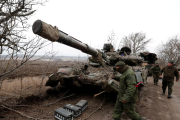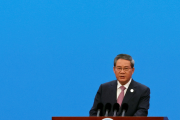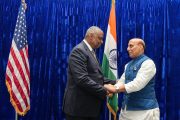Editor’s Note
In 2016, the then defence minister Manohar Parrikar, while talking about ‘No First Use’ (NFU) had said, “Why should I bind myself? I should say I am a responsible nuclear power and I will not use it irresponsibly.” The issue of reviewing the Indian adherence to NFU again surfaced when Mr. Rajnath Singh, the current Defence Minister recently stated, “Till today, our nuclear policy is ‘No First Use’. What happens in future depends on the circumstances”.
The article examines the issues of NFU from a realist perspective arguing that it may be time for a review of the NFU as part of India’s nuclear doctrine while also considering other aspects that may require review. According to the author, instability should not be conflated with deterrence and that instability can create manoeuvring room for a more advantageous deterrence level. He also feels that NFU commitments generally are not seen as credible by others, and deterrence has to principally play on the other side’s mind, not our own. The author also explains why the feeling that “NFU has served India well” is off the mark.
…………………………………………..…………………………………………………………………………………..
Review of Indian No First Use Nuclear Policy: Posers and Posits
From time to time in India there are periods when nuclear policy and consequent nuclear strategic issues come to the fore. The latest trigger of course, was regarding ‘No First Use (NFU) during Raksha Mantri (Defence Minister) Rajnath Singh’s interaction with the media on 16 Aug 2019. This was followed by a tweet which concluded, “What happens in the future depends on the circumstances.”
As opening arguments, one may state the following:
- Any rethinking about NFU does not in any way mean that ‘First Use’ (FiU), now becomes the default policy. (The abbreviation ‘FiU’ is being used advisedly, such that it cannot be “misinterpreted” for something else!)
- Throughout the decades of nuclear weapons has been a reality, states have threatened their use on occasion as part of statecraft sometimes leaning towards “war-craft” as during the Korean War. For instance, after President Truman’s press conference on 30 November 1950, a clarifying statement was issued by the US State Department: “Naturally, there has been consideration of this subject since the outbreak of the hostilities in Korea, just as there is consideration of the use of all military weapons whenever our forces are in combat…Consideration of the use of any weapon is always implicit in the very possession of that weapon.” (https://history.state.gov/historicaldocuments/frus1950v07/d909)
- There is an error that analysts sometimes make in conflating instability in nuclear deterrence as something bordering on the collapse of deterrence itself by referring to the spectre of devastation all around, of self-fulfilling prophecies and so on. However, in theory, deterrence could collapse in conditions of relative nuclear stability as well.
- The strident political-nuclear-warfighting rhetoric that often comes out of Pyongyang has been rare for some other nuclear-weapon states (NWS). An even more egregious example is the nature of the Islamabad-Rawalpindi combine with their nearly constant threat of the use of nuclear weapons. Is it possible to say that fictional characters like Brigadier General Ripper, General Buck Turgidson or Dr Stangelove from the eponymous Hollywood film may exist in real life in these countries?
- Finally, as sharply pointed out by American physicist, defence and nuclear-energy bureaucrat, John Harvey, “After all, if a country is willing to use nuclear weapons, it’s also willing to break a promise.” This line highlights that NFU is not automatically seen as a “credible” contributor to deterrence.
Nuclear Policy and Strategy
For India or any other nation, no policy of statecraft, including nuclear policy, can or should be etched in stone. Consequently, the strategies for the implementation of the policies also need to be dynamic. In other words, as the Defence Minister said, “What happens in the future depends on the circumstances.” In November 2016, the then Defence Minister, (late) Manohar Parrikar implied the same about FiU, albeit in words that were different. Likewise, others who have been part of the policy framework, as well as the strategy formulation and execution chain, have said that policies are not permanent (a former NSA, for instance). In fact, doctrinal amendments, policy reviews and changing nuclear-strategic architectures have been common in all nuclear weapon states (NWS). What’s more, the deeper, much classified inner thinking of those who constitute the equivalent of any nation’s version of the National/Nuclear Command Authority (NCA) would know the cards they hold, and their actions would of necessity “depend on the circumstances.”
When current members of the NCA (like both the defence ministers) or a former NSA or CINC of the Strategic forces Command (SFC) talk of the dynamism needed in policy making through reviews, a few inferences could be made:
- They wouldn’t be speaking casually but as a result of the study, the burdens of responsibility and experience. Their opinions on what may need to change (policy and doctrine) or some thoughts on how the changes may be made effective (through strategy and force-planning, etc.) may not be similar and they may differ with each other. However, the essence is that neither policy nor doctrine is etched in stone.
- When subjected to deeper analysis, NFU has perhaps not yielded the dividends hoped for. This is discussed further below. Yet, it seems quite correct to have begun with NFU while India was an infant NWS after the 1998 tests and the process of building the complex architecture of strategic nuclear deterrence was in hand step-by-step.
- Nuclear signalling is a necessary part of deterrence because in its simplest and at the same time complex levels, deterrence has to work on the mind of other states. Therefore, such statements matter and there could be benefits in the development of new “ends-ways-means” discussions of bringing India to a stronger position for a more effective deterrence level. The moot question to be asked does “NFU” declaration work. More on this below.
“NFU Has Served India Well”
The phrase, or words to that effect, is often used by advocates of continuation of NFU. In nuclear matters, there is no easy or obvious measure of effectiveness. Since 1945, no nuclear weapons have been used in anger, despite their proliferation worldwide in a process that so far has led to nine NWS. In that sense could it be said that thus far, regardless of differing doctrines, differentials in numbers, yields and types of vectors as well as delivery platforms, deterrence works anyway? In a sense then, haven’t all NWS been “responsible” enough? These are rhetorical questions, of course, and nuclear deterrence cannot be oversimplified. In the same vein, the problem in thinking that NFU has served India well has to be weighed against the following:
- For nearly two decades now, our NFU does not seem to have been thought of as “credible” by Pakistan, just as some in India cannot put iron-clad credence in China’s NFU vis-a-vis India. Pakistan has been very belligerent in holding out its threat of using nuclear weapons in a range of scenarios. They are also developing a variety of low-yield vectors (in India we should actually use this term rather than the “tactical nuclear weapons”, TNW). The recent belligerence of the Pakistani PM’s allusions to the threat of nuclear war in the sub-continent could be rightly called rants. They do nothing to repair Pakistan’s tattered reputation. Nonetheless, it has always been easier to talk about calling “Pakistan’s bluff” if one is in a TV studio than if one is a member of the Cabinet Committee of Security or the Indian NCA. They have to take the longer-term implications of the continued rants of an adversary. Almost two decades of India’s nuclear doctrine-it may seem to them-requires quiet debates and perhaps consequent reviews. Was it merely coincidental that this thinking was reflected in BJP’s 2014 Manifesto? One thinks not.
- The next factor is what this writer would say is the Quality-Quantity (QQ) factors of the deterrence architecture. This spans survivability of the NCA as well as of a certain number of vectors from an enemy’s first counter-force strike (CF) or a combination of CF and counter-value (CV) strike while retaining the margins to survive and retaliate within what could be an extremely short window. Recall that under NFU, it is axiomatic that India absorbs a first strike before retaliating. Given the environmental challenges, especially from Islamabad-Rawalpindi, how is a government in Delhi to convince itself and the 1.25 billion citizens that it would be acceptable to absorb an NBC (nuclear, biological and chemical) strike and then set in motion the actions needed for retaliation in a short window? How does the current position of NFU assure Indian citizens and does a transition to abrogation of NFU further endanger the sense of security for our population?
- In fact, NFU has been considered periodically in the US since the early 1980s and been pushed off the table. In 1982, Brezhnev made a sort of NFU declaration at the UNGA but then soon thereafter the Soviets walked away from it. In any case, the West, and perhaps even China in those days did not believe in the Soviet reassurance. Lawrence Freedman goes on to say, “…that the case for extending deterrence to chemical and biological weapons…was one reason why there was a reluctance to support proposals for a no-first-use declaration. The conclusion was that there was no alternative but to keep the enemy guessing: any attempt to define with precision the circumstances under which a nuclear counter-strike would be launched would generate great controversy and send confusing signals.” (The Evolution of Nuclear Strategy, p 432.)
- Other than China and India, none of the other seven NWS have an NFU undertaking and, from each one’s perspective, for logical reasons. In parallel, neither is there irrefutable logic to say that a mutual NFU between China and India should stand. If NFU has so much going for it, should we continue it if, for some reason, China officially steps back from NFU? Would it make sense to have NFU with China but call it off with Pakistan? This writer thinks that would be illogical and disadvantageous. In any case, there are some “Track 2” signals from China that they may review it even if the current Defence White Paper stands by it. After all, they need to take into account the changes in the US nuclear postures, the annulment of the INF Treaty and the revival of low-yield cruise missiles. There is little we see in the practice of Chinese statecraft to assure ourselves that they won’t “break a promise.”
- A related factor is the number of vectors that is critical for matters of both, Credible Deterrence or Credible Minimum Deterrence (CD/CMD). If data collated from the Bulletin of Atomic Scientists is considered, China has 280 (X); Pakistan, 140-150 (Y) but presumed to have an accretion rate higher than India’s; India, 130-140 (Z). China alone with “X” or with Pakistan “(X)+(Y)” creates quantitative challenges for CMD/CD for India with “Z” vectors. Deterrence stability is not about straightforward arithmetic, but vector numbers do matter. “Z<< X+Y” could be seen as a curious twist of the Royal Navy’s “two- power standard” for force- structuring at the zenith of British power. (The writer has taken this from his chapter for an as-yet-unpublished book. The British Parliament had decreed in 1899 that the Royal Navy was to be more powerful than the next two navies combined.) Under such realities of QQ disadvantages, a more ambiguous doctrine would bolster our assurance, although in any case, the overall QQ would need enhancement in several areas as well.
A point about BMD. Both, China and Pakistan have an arsenal of conventional missiles that are similar to versions that carry nuclear warheads. No nation has adequate BMD capabilities to cater for a sort of a conventional “CF” attack that, among other things, depletes BMD holdings. On the matter of BMD, here are two thoughts:
- First, it seems from media analysis that India does not have conventionally-armed ballistic missiles. These may turn out to be important for the longer-range, high-speed precision-strike capability that both Pakistan and China have. Second, it increases ambiguity in ways similar to those that help these countries against India (and for China with respect to the US and its other East Asian neighbours).
- A second point refers to ownership of BMD within India. In a very good article by Vinod Kumar for IDSA (27 Aug 2019), advocating a review of NFU, he recommends “the transfer of BMD assets from the Indian Air Force to the Strategic Forces Command to fully integrate them with the strategic mission.” This could be ill-advised because one imagines the SFC’s charter is to launch vectors when ordered. National BMD, of course, helps the overall effectiveness of deterrence framework. However, BMD is fundamentally a national air-space defence function that has national sensor and weapon fusion and should be under the Indian Air Force and whatever successor arrangements are made as a reorganization for greater jointness progresses.
The Chimera of Global Disarmament
A final observation is about the thought that NFU would help the aim of global nuclear disarmament. While this is a commendable, theoretically attainable goal, its realization may at best be more than a few generations away. Biological and chemical weapons usage could be even harder to prevent and may require nuclear first-strike and retaliatory capability as pointed out by Freedman. So, NFU would multilaterally not really help the “moral” goal of a nuclear- weapon-free world; unilaterally for India, it would be ill-advised.
Conclusion
The debate over a review of the nuclear doctrine should continue with the idea that logic should reign supreme and all elements of any reviews further India’s strategic stability. A review could cause some instability but such instability should lead us to a more favourable normal. We may also keep in mind that instability cannot be conflated with a collapse of deterrence which could, in theory (and hopefully never in practice), occur even in stable/matched nuclear frameworks between adversaries. From time to time, Pakistan’s nuclear-strategic developments have caused some instability of deterrence, but arguably, that instability has worked more in its favour. Is it time, therefore, for India to begin changing that? Is it time for India to consider an escalation-prevention and an escalation-control ladder for a better deterrence framework through consideration of an arsenal that includes low-yield weapons as well?
In the end, to paraphrase Churchill, “In the field of nuclear conflict, so much was done for the protection of so many citizens by the implication of FiU!” could be something to think about.
Rear Admiral SY Shrikhande (Retd)
(Disclaimer: The views and opinions expressed in this article are those of the author and do not necessarily reflect the official policy or position of BharatShakti.in)




